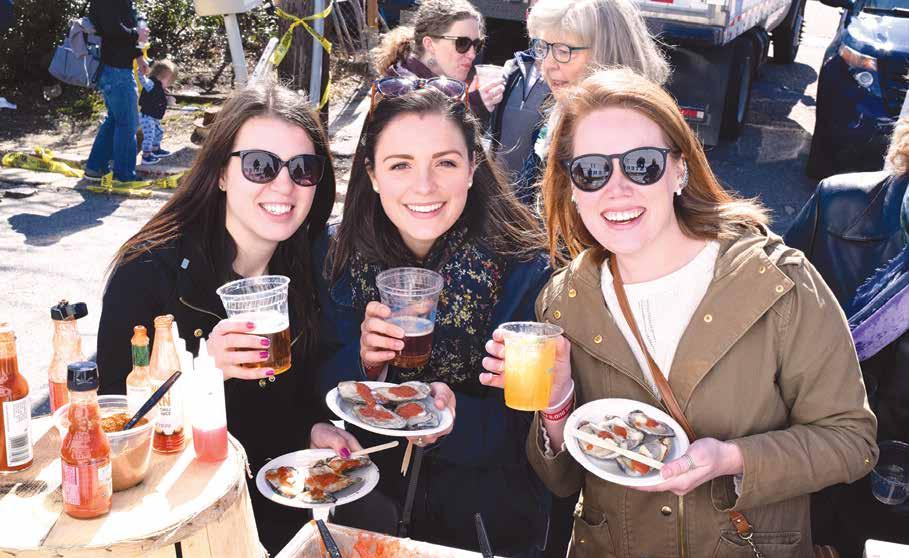GRAPEVINE
MATT FITZSIMMONS
Photo by Sara Petras
Mixing It Up With Locally Crafted Vermouth
S
aying Virginia is known for its craft beverages is an understatement. The state hosts almost 300 wineries, over 200 breweries, roughly 40 distilleries, at least 30 cideries, and nearly a dozen meaderies. But did you know we make our own vermouth as well? If there was ever a beverage that’s misunderstood, it’s vermouth. It’s not quite a wine, but not quite a spirit either. Most people think of it as a cocktail mixer (think Negronis and Martinis) or aperitif, but vermouth can be enjoyed on its own. Even defining vermouth is becoming difficult as American producers become more creative in their choice of botanicals. Virginia vermouths are equally diverse.
So What’s A Vermouth? Put simply, vermouth is an aromatized (flavored with spices, herbs, or other florals) fortified wine. It likely started as a medicinal tonic, as the beverage’s botanical qualities made the medicine go down more easily. The alchemists who made the first vermouths must have realized they were on to something, so a trend began. Modern vermouth includes a wine base, bittering agent, spirit for fortification, and a sweetener. While 34
March 2022
traditionally made with wormwood (vermouth is actually the French pronunciation of the word wermut, the German name for this herb), the term vermouth is increasingly applied to any aromatized wine. However, purists would argue that without wormwood, it may be an aromatized wine but it’s not a vermouth. Vermouth’s popularity is in large part due to its versatility. It provides cocktails an array of flavor profiles without requiring the bartender to add more ingredients. When you narrow it down, there are three major types of vermouth; sweet (red), dry (white), and blanc. Sweet vermouths are usually paired with richer drinks like bourbon or rum and are a component of Manhattans and Negronis. Dry vermouth goes with lighter spirits. Blanc vermouths are typically a halfway point between the red and white versions, and may be sipped straight.
Virginia Vermouths Gaining Traction Only a handful of vermouths are made in Virginia, usually by local winemakers. This small scale production means local ingredients play a prominent role, giving mixologists something new and exciting to play with. Virginia vermouth-makers can also boast that these are craft products, with a quality and complexity that allows them to be
enjoyed on their own or used in a cocktail. Kelly Allen and Andrew Napier of ARTEMISIA FARM AND VINEYARD are amongst this small group of vermouth-makers. Kelly explained, “We want to capture Virginia’s terroir as an abstract essence.” While Artemisia’s current focuws is their CSA farm, making bitters, sparkling, and vermouth is a growing project. Members of their Patreon even receive a small sample of what’s to come. Vermouth wasn’t one of the products in ROSEMONT VINEYARDS & WINERY‘s original business plan, but Justin Rose loved the idea of making something new. “It was really our distributor’s idea. We had some white wine we hadn’t used. But our distributor asked us to make one so we jumped at the idea. We’ve partnered with CAPITOLINE, which has the expertise on the botanicals we should use and how. Ours is a little different. We use birch bark instead of wormwood as a bittering agent. Traditionally the botanicals are infused into the wine, but we use the botanicals in the brandy first then blend it. We also use local honey instead of sugar as a sweetener, which gives it a nice aromatic profile. So we’ve tried to keep it regional and local.
GRAPEVINE > PAGE 35
Old Town Crier























